There’s no doubt that insect activity slows down in November. But (there’s always a but), you may be surprised at just how much insect activity there is at this time of the year. If the sun is shining, much of that insect activity may be found wherever there is a warm spot, away from the shaded areas.
There’s one insect that we don’t see in our area until at least October. As long as the sun is shining and the temperatures are in the fifties or sixties it’s possible to see an Autumn Meadowhawk (Sympetrum vicinum), as late as December.
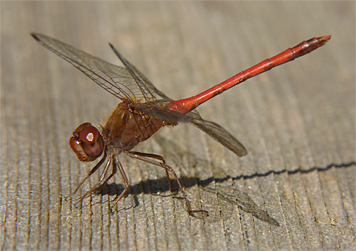
The males have red abdomens with brownish bodies, eyes, and legs.
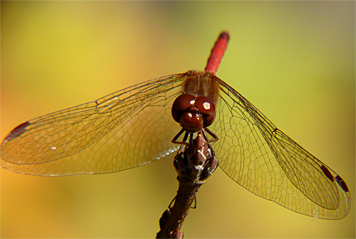
October and November are when these dragonflies mate. As you stroll past a sunny area of the boardwalk, or a warm sheltered spot on the north side of the Wetlands, you may notice a pair of these small dragonflies fly by you, or perch on the railing of the boardwalk. Stop briefly and have a look. If you approach slowly you can get quite close to them.
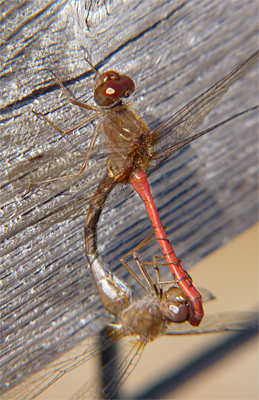
Another insect that is not often encountered until fall (in the adult form) and may be seen until the first hard frost, is the Wheel Bug (Arilus cristatus).
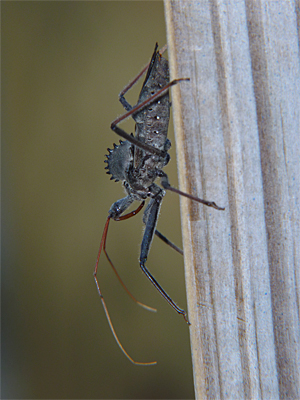
Anyone who has picnicked outside during the fall knows what a Yellowjacket is. Although seen throughout the summer, they are certainly more abundant, and bothersome, during the fall. There were many of these small, brightly colored wasps nectaring on one of the only flowering plant species on the Dinosaur Trail during the first week of November, Fatsia or Japanese Aralia.
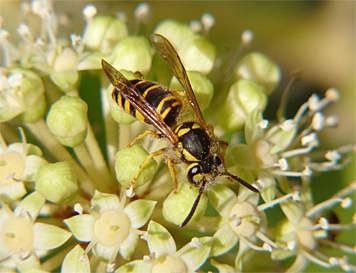
There were many other insects visiting the Fatsia, including various fly species, bumble bees, and small red ants (not Fire Ants). Anyone know the species?
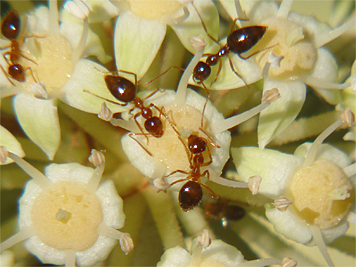
Although I didn’t know the name of it at the time, a Fourhumped Stinkbug (Brochymena quadripustulata) sat on the railing leading down into the Wetlands for most of the day on the clear and cool 7th day of November. By submitting the photo below (along with another) to BugGuide, I received a response to an identification request within minutes.
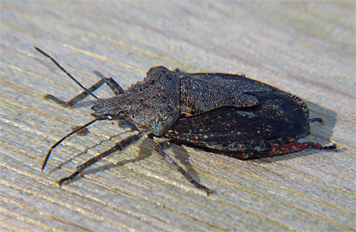
Great pictures, Greg! Those hooded mergansers are pretty funky looking!
Indeed, the mergansers are funky looking. I look forward to seeing them each November and wish that we could entice them to breed here in the Wetlands so that we could watch them year round.